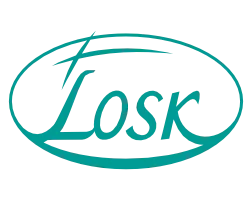LOSK glass and mirror processing facilities
The company 'LOSK' is a modern glass processing enterprise with twenty units of equipment from famous European manufacturers. The equipment is located on a seven-thousand-square-meter area.
Glass Cutting
LOSK firm in Kharkov uses an automatic line to cut and break flat and laminated glass from the Austrian company 'Lisec'.
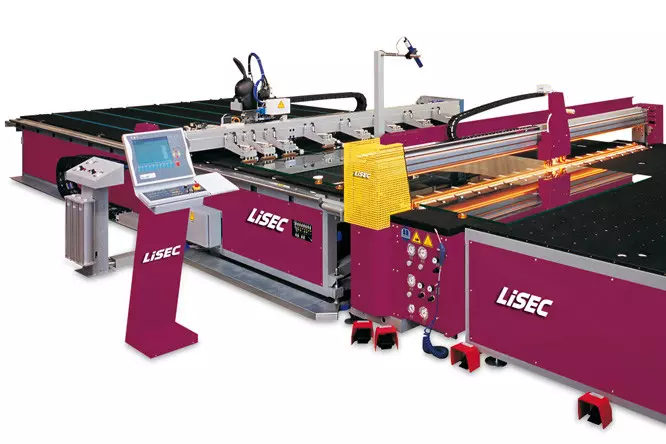
Technical features of the automatic line for cutting and breaking flat glass.:
- Thickness of glass from 2 to 12 mm.
- Laminated glass thickness from 4 to 12 mm.
- Maximum sheet sizes 3300x2550 mm.
Straight-line processing of the glass edge
Bovone's top-of-the-line machines enable us to efficiently and effectively process glass edges. Placing them strategically in the production unit eliminates operator downtime and significantly improves productivity.
In May 2020, Intermac will commission its latest multifunctional vertical CNC machining center, the Vertmax 2.2. This model will triple productivity and provide potential customers with high-quality drilling, countersinking, milling, grinding, and polishing of edges. Additionally, the center can treat glass with a soft coating without causing damage.
Manufacturers of double-glazed windows can obtain the ideal glass for their products..
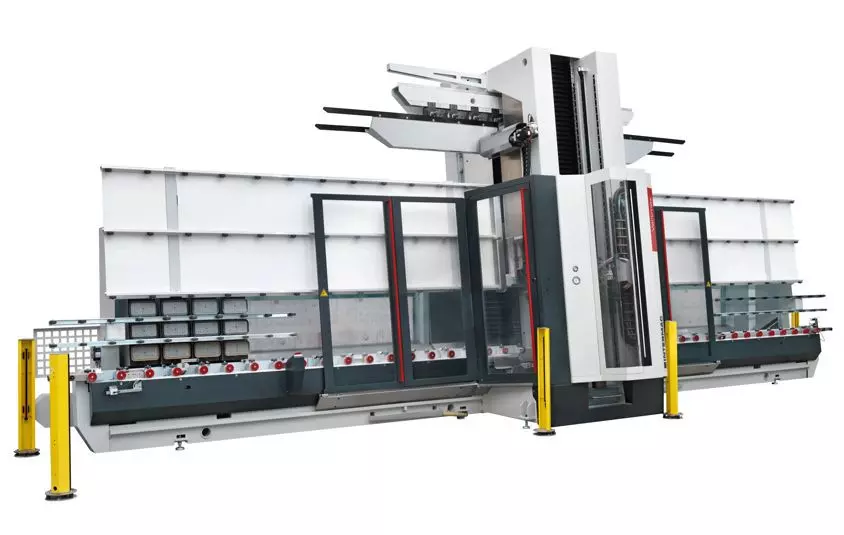
Specification of Vertmax 2.2:
- Maximum glass size (mm) 3500/2200
- Minimum size of glass (mm) 500/300
- Glass thickness (mm) 4 - 25
- Glass moving speed (m / min) - 30

ELB 12HS Automatic Line Edge Processing Line Technical Features:
- A distinctive feature is the high speed of work.
- HS Index - High Speed - 0.35 ÷ 10 m / min
- The thickness of the glass is from 2 to 60 mm.
- The minimum sizes of the processed glass are 40х40 mm.
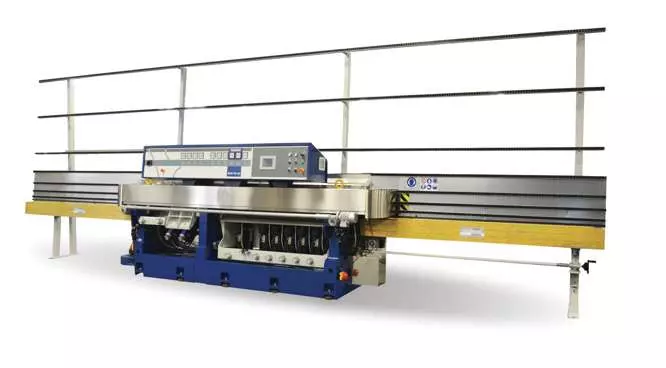
ELB 10/45 automatic straight line glass processing technical capabilities:
- Distinctive feature - Bovone ELB 10/45 allows you to remove the chamfer at a given angle (0 ° ÷ 45 °) with minimal residue.
- Glass processing speed - 0.35 ÷ 5.4 m / min.
- The thickness of the glass is from 2 to 40 mm.
- The minimum sizes of the processed glass 65х65 mm.
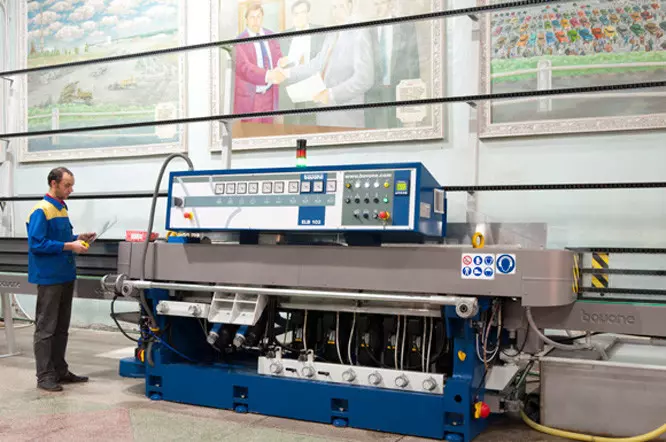
ELB 102 automatic straight-line glass processing technical capabilities:
- Glass processing speed - 0.35 ÷ 5.4 m / min.
- The thickness of the glass is from 2 to 30 mm.
- The minimum sizes of the processed glass are 40х40 mm.
Tempering and thermal strengthening
We use the ProE-2136-CTA-20 line from Tamglass to temper and strengthen glass. Our furnace is equipped with an advanced convection system, which enables us to produce high-quality tempered glass.
Computer control allows for precise selection of quenching parameters for any type of glass, as well as providing control over surface heating temperature, ensuring maximum stability and process repeatability.
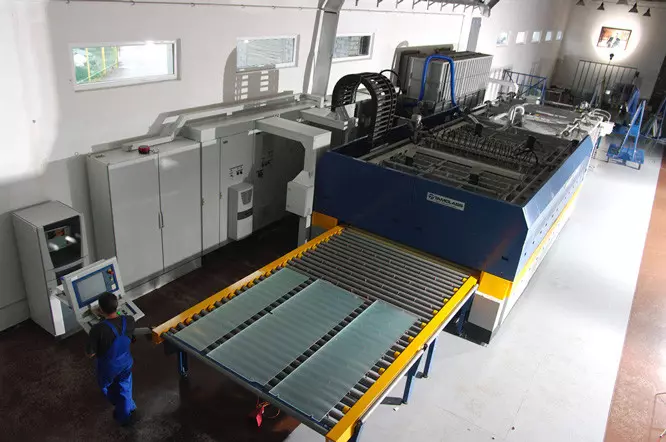
LOSK can temper glass in sizes ranging from 100x250 mm to 3600x2100 mm, with a glass thickness of 4 to 19 mm.
Options for glass tempering:
- The thickness of the glass is from 4 to 19 mm.
- The maximum sizes are 3600х2100 mm.
- The minimum sizes are 100х250 mm.
Thanks to the advanced convection system, LOSK can temper any reflector glass with low emission coating.
Curvilinear treatment and facet
We produce curvilinear and facet trimming on glass, mirrors, and laminated glass using semi-automatic machines such as Lovati LOV-1000-EES, Z. Bavelloni SB-10, and Meccanica CAMBI. The trimming is done at an angle of 0°-45° for decorative purposes.
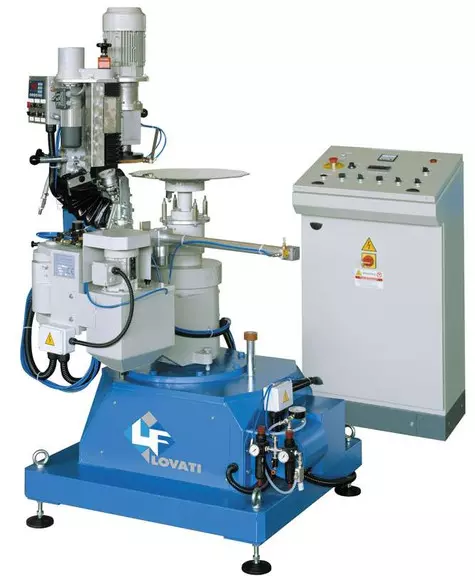
Technical capabilities of the machine Lovati LOV-1000-EES:
- The thickness of the glass is 3-25 mm.
- The sizes of the processed glass are 100-2300 mm.
- Chamfer width - 5-40 mm.
- Chamfer angle - 0 ° -45 °
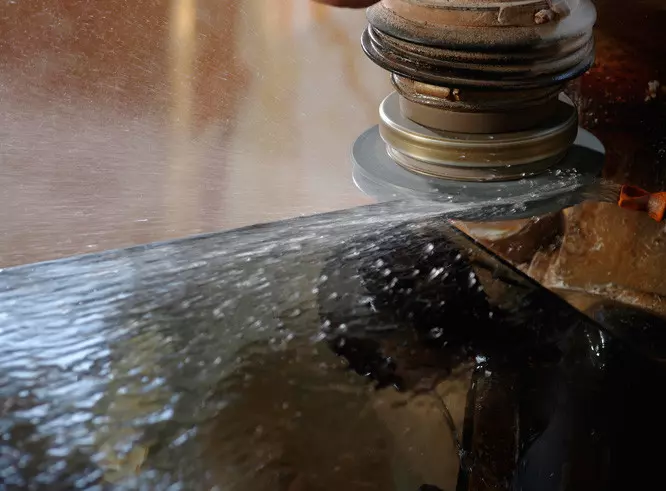
Technical features of glass processing machines Z. Bavelloni SB-10 and Meccanica CAMBI:
- The thickness of the glass is from 4 to 40 mm.
- The minimum sizes of the processed glass are 150х150 mm.
- The maximum sizes of the processed glass are 2100х1300 mm. weighing no more than 100 kg.
- The minimum radius of the processed glass is 75 mm.
Curly edge processing, engraving, milling
The new modern center Intermac Master 43 Glass + executes orders for curvilinear processing, engraving, and milling of glass. The orders can be complex.
INTERMAC's latest 3-axis glass processing centre is the Master 43.
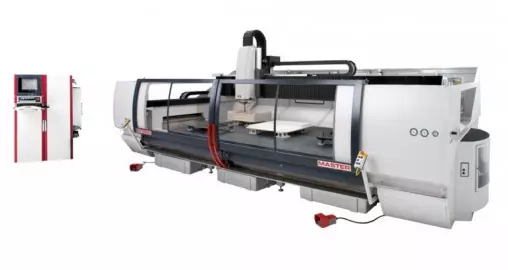
These centres are designed for companies that want to equip their production facilities with high-quality equipment that offers excellent value for money.
Drilling holes
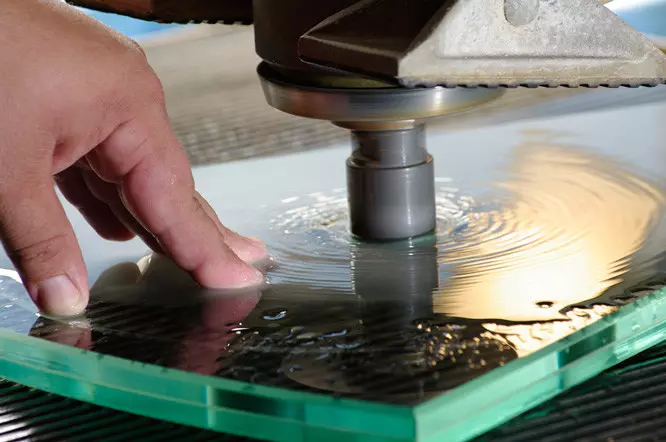
Our specialists use a specialized machine, RBB di Brazzi, to drill holes in glass, mirrors, and triplexes.
The Intermac Master 43 Glass+ is a multifunctional centre that can cut glass and mirrors into the correct shape, including internal holes with a diameter of 40mm, curved inner holes, and openings in triplex. It can handle glass thicknesses ranging from 4mm to 19mm.
Facet
For the production of rectilinear facet on glass and mirrors, up to 60 mm wide, a high-performance 471 series machine made by the Italian firm Bovone is used.
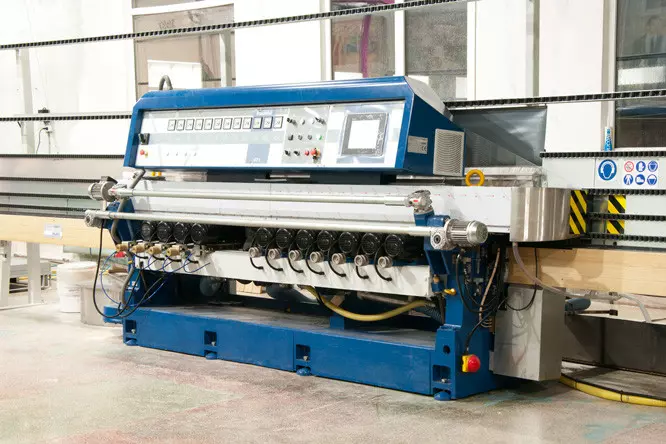
Technical capabilities of the MM 471 facet machine:
- The thickness of the glass is from 3 to 25 mm.
- The maximum sizes are 2500x2500 mm.
- Angle - 0 ° -45 °
The minimum dimensions for maximum width of the facet are shown in the table:
| # | Workpiece length, mm | Workpiece width, mm | Max facet width, mm |
|---|---|---|---|
| 1 | 35 | 35 | 8 |
| 2 | 40 | 40 | 10 |
| 3 | 50 | 50 | 15 |
| 4 | 70 | 70 | 20 |
| 5 | 90 | 90 | 25 |
| 6 | 110 | 110 | 30 |
| 7 | 130 | 130 | 35 |
| 8 | 160 | 160 | 40 |
Production of double-glazed windows
LOSK manufactured the first double-glazed window in 1992.
The product was unique and difficult to understand. Many people asked, 'why?'
The company developed a direction for the production of double-glazed windows in parallel with the construction of the factory for the production of plastic windows in Pisochyn, Kharkiv region. In 1998, the first double-glazed window was made on a semi-automatic line purchased from the Italian company 'Forel', which met all requirements and norms. This was the first production line for double-glazed windows in Ukraine.
The Austrian company Peter Lisec's semiautomatic double-glazing production line has eliminated the human factor from labor-intensive and responsible assembly processes, reducing the number of employees and increasing productivity.

Various types of special glass can be used in glass production to create multifunctional glass. This glass can be sun-protective and energy-saving, as well as impact-resistant, puncture-proof, bulletproof and safe. The technologies available today make this possible.
The double glazing production line comprises the following modules:
- Automated primary sealing of glazing BASE BUTYLE.
- The thickness of the glass is from 3 to 25 mm.
- The maximum sizes are 2500x2500 mm.
Laminated glass (triplex)
Glass lamination occurs in a special chamber called an autoclave. The layers of glass are glued together under pressure and high temperature. This process is time-consuming but the company uses it because it produces the highest quality lamination.
Losk has been producing laminated glass for over five years. During this time, the company has tested various manufacturing methods and has settled on what we believe to be the most reliable method: gluing the glass in an autoclave under pressure at a temperature of 150°C.
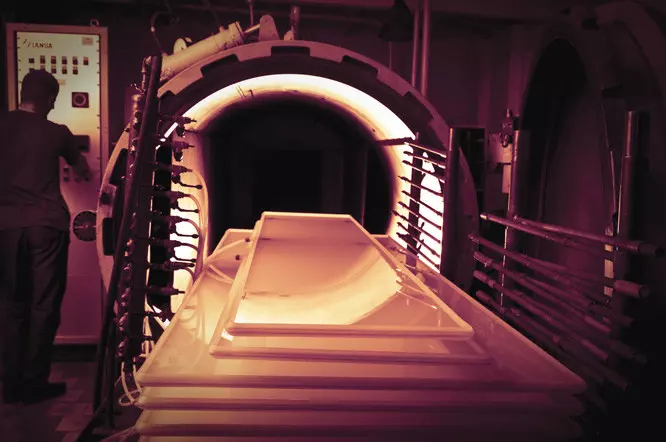
We only use polyvinyl butyral film as our adhesive material. This is because no liquid polymer can currently compete with the film, resulting in better optical and strength properties for the triplex produced with it.
Depending on the destination, we can produce the following types of laminated glass:
- Resistant to mechanical stress
- Bulletproof
- Explosiveproof
- Fireproof
- Noise protective
- Frost resistant
- Multilayer with special properties (such as radio interference, biological or information protection)
Sandblasting (matting) of glass
The LOSK company in Kharkov uses modern equipment to sandblast (frost) glass and mirrors.
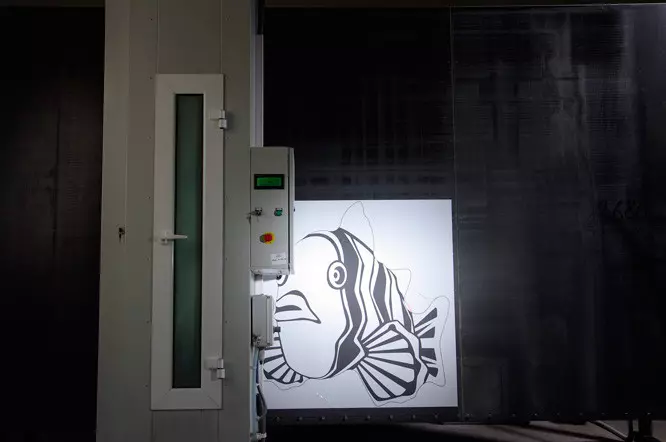
The machine is equipped with a movable frosting chamber, unlike the traditional method of moving glass on a conveyor. The glass is kept immobile during the process. This allows for work with workpieces of complex shapes and eliminates the appearance of scratches on the back of the glass.
The borders of the matting area and the speed of movement of the camera and carriage are set using the CNC system.
Technical data:
- The maximum glass size is 3000 x 2250 mm.
- Productivity 5..9 min / m2

